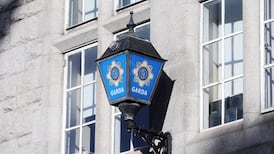Palestinians are denied access to 45 per cent of the West Bank; are not allowed to build on another 15 per cent and are restricted to squares the Israeli military can isolate or besiege, writes Michael Jansenin Jerusalem
From the flat roof of a grand stone-built house on the summit of the Mount of Olives you can see Israel's eight-metre-high (26ft) concrete wall cutting through gardens, looming over two-storey homes and snaking across the Judean hills towards Abu Dis and al-Quds University, the Palestinian university deported from Jerusalem to the West Bank.
To the east of the house lies Bethany, or Azariya, where Jesus Christ raised Lazarus from the dead and stayed as a guest before walking downhill into Jerusalem for the Last Supper.
A yellow mini-bus navigates Bethany's almost-empty main street, shops are shuttered, the bells of St Lazarus's Church have a distant, hollow ring. Bethany, once bustling with pilgrims and tourists, is dying, as are most West Bank towns.
Israel's settlements and barriers have chopped up the occupied West Bank into tight compartments, obstructing the freedom of movement of 2.4 million Palestinians and plunging the Palestinian economy into freefall. According to the UN Office for the Co-ordination of Humanitarian Affairs (OCHA), there are 161 full-scale Israeli settlements, 96 settler outposts and 27 military bases in the West Bank. The West Bank colonies house 247,300 Israelis, while 182,000 dwell in a dozen settlements in East Jerusalem.
To protect these settlements, which are built in violation of the Fourth Geneva Convention and international law, Israel has constructed 549 roadblocks and checkpoints and is in the process of completing its 720km- (450-mile) wall and fence complex, which runs the length of the narrow West Bank and juts deep into the territory to encircle and separate Palestinian towns and villages. The number of physical obstacles has increased from 417 a year ago. In addition to checkpoints and sections of the main wall, these include roadblocks, metal gates, trenches, barriers and earth mounds. The Israeli army also mounts "flying checkpoints" at strategic locations.
If Jesus was to try to enter Bethany today, he would be stopped at a checkpoint and could be arrested because, as a resident of Nazareth, he would be a citizen of Israel. Bethany is out of bounds for Israelis.
OCHA, which tracks developments with teams on the ground and satellite imagining, estimates that the Palestinians are denied access to 45 per cent of the West Bank and are not allowed to build on another 15 per cent. In the remaining 40 per cent, Palestinians are confined to well-defined squares which the Israeli military can isolate or besiege at any time.
Palestinian movement is restricted to 1,600km (990 miles) of Palestinian-only roads while Israeli settlers can drive almost anywhere along networks of highways and settler-only roads.
Israel is building a sunken road connecting the northern and southern sectors of the West Bank, as well as a shared road with a wall down its centre to separate Palestinian and settler traffic. Tunnels will eventually connect Palestinian enclaves.
Special regimes apply to certain areas. In the Jordan Valley, access is granted to Palestinian landowners who dwell there as well as to those who do not and to outsiders. But non-residents cannot use their vehicles in the zone.
Palestinians permitted to enter East Jerusalem have access along four of 12 routes from the east. West Bank residents need to apply for temporary permits, which are routinely denied.
Palestinian goods and produce from the West Bank are off-loaded from Palestinian vehicles and placed on Israeli transport at checkpoints when travelling between the West Bank and areas designated as Israel, including Greater Jerusalem. The reverse applies to goods and produce being transported from Israel to the West Bank. This territory is also cut off from the Gaza Strip and its 1.4 million Palestinian inhabitants.
Following the signing of the Oslo Accord on the White House lawn in September 1993, Palestinians expected all of the West Bank and Gaza to become a viable independent Palestinian state by 1999. However, David Shearer, head of OCHA in the occupied Palestinian territories, observed: "A failed state is being built alongside Israel."







